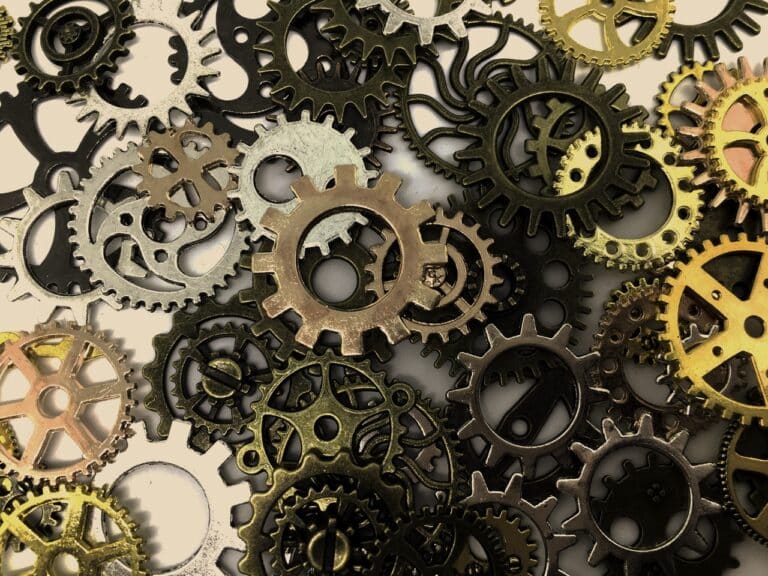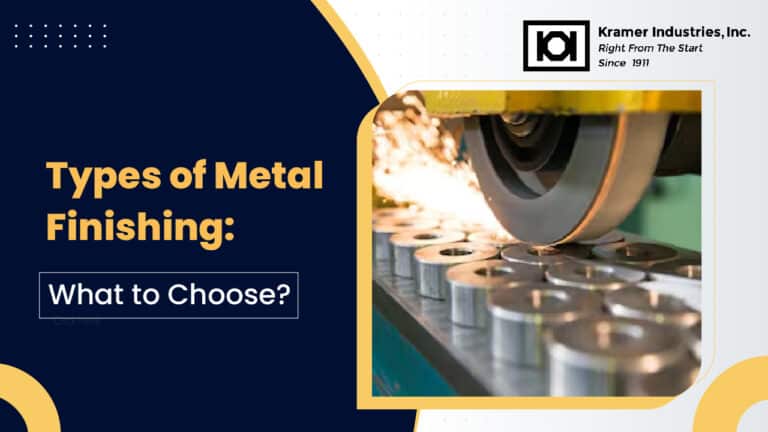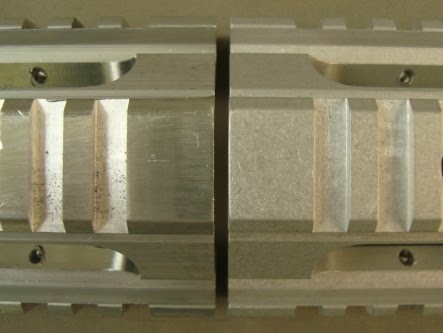Stainless Steel Surface Finishing: Stainless steel is a remarkable alloy in the fields of materials science and manufacturing, renowned for its robustness, resistance to corrosion, and aesthetic appeal. However, a crucial step called surface finishing is required to transform stainless steel from its unfinished state to the gleaming, faultless products we admire. This procedure guarantees the material’s performance and functionality while also enhancing the material’s appearance. In this thorough guide, we’ll delve into the world of stainless steel surface finishing, looking at its different varieties, techniques for calculating surface roughness, and its general significance across various industries.
Stainless steel surface finishing explained
The texture or appearance of the metal’s outer layer after going through a number of mechanical, chemical, or electrochemical processes is referred to as a stainless steel surface finish. These procedures change the surface’s texture, reflectivity, and roughness, which has an impact on both appearance and performance. Surface treatments have a variety of functions, from increasing corrosion resistance to making surfaces easier to clean and imparting a particular aesthetic appeal.
Types of Stainless steel surface finishing
Based on their texture, which is typically measured in terms of roughness, stainless steel surface finishes are divided into different categories. Let’s examine a few prevalent types:
Mill Finishes
No. 1 Finish
The first finish is hot-rolled, annealed, and pickled. The hot rolling process gave rise to a rough and dull appearance in this finish. It’s often used for applications where appearance is not a primary concern, such as industrial equipment.
No. 2D Finish (Cold Rolled, Annealed, Pickled)
This finish is smoother than No. 1 but retains a matte appearance. It’s widely used in applications where moderate corrosion resistance is required, such as automotive trims.
No. 2B Finish (Cold Rolled, Annealed)
The No. 2B finish exhibits a bright, reflective surface, making it popular for decorative applications like kitchen appliances and architectural elements.
Mechanically Polished Finishes
No. 3 Finish (Intermediate Polished)
A moderate polishing process creates a semi-reflective surface suitable for various applications, including dairy equipment and brewery tanks.
No. 4 Finish (Brushed or Satin Finish)
Achieved through brushing, this finish features parallel lines on the surface, making it an excellent choice for aesthetic-focused products like elevator doors and kitchen countertops.
No. 8 Finish (Mirror Finish)
The most reflective of all finishes, No. 8 is synonymous with a mirror-like surface. It’s employed in high-end applications like jewelry, reflective signage, and architectural accents.
Determining Surface Roughness of Stainless Steel
Surface roughness plays a pivotal role in determining the performance and aesthetics of stainless steel products. Various methods are used to measure this roughness, with the Ra (arithmetical mean roughness) value being a common metric. Instruments like profilometers and surface roughness testers aid in assessing the texture of a finished stainless steel surface.
To determine surface roughness, follow these steps:
Preparation
Ensure the stainless steel sample is properly cleaned to eliminate contaminants that could affect measurements.
Measurement
Utilize a profilometer or roughness tester to measure the microscopic peaks and valleys on the surface. The instrument traces a stylus or laser across the surface, generating data that is used to calculate roughness values.
Analysis
The collected data is used to calculate various roughness parameters, including Ra, Rz, Rq, and more. These parameters provide insights into different aspects of surface texture.
ComparisonCompare the obtained roughness values with industry standards and requirements for the intended application. This step ensures that the finished surface meets the desired specifications.
The Significance of Stainless Steel Surface Finishing

Stainless steel surface finishing extends beyond aesthetics, influencing various aspects of the material’s performance and application suitability:
Corrosion Resistance
Properly finished surfaces exhibit improved corrosion resistance, crucial in applications exposed to harsh environments or corrosive substances.
Cleanability
Smooth and polished finishes prevent the accumulation of dirt, grease, and contaminants, making surfaces easier to clean and maintain.
Hygiene and Sanitation
In industries like food processing and pharmaceuticals, a smooth surface finish prevents the buildup of bacteria and facilitates thorough cleaning, enhancing hygiene standards.
Aesthetics
Surface finishes play a pivotal role in defining the visual appeal of stainless steel products, making them suitable for both functional and decorative applications.
Wear Resistance
Certain surface finishes can enhance the material’s wear resistance, increasing its lifespan in applications subject to friction and mechanical stress.
Reflectivity
Finishes like the No. 8 mirror finish are chosen for applications where high reflectivity is desired, such as architectural accents and decorative elements.
Stainless steel surface finishing is a versatile and crucial step in the journey from raw material to refined product. It marries the worlds of science and art, yielding surfaces that are not only visually appealing but also highly functional and durable. The array of finishes available allows manufacturers to tailor stainless steel products to their intended applications, whether they require enhanced corrosion resistance, improved hygiene, or a stunning aesthetic. By understanding the nuances of stainless steel surface finishing, industries can continue to deliver products that exemplify both excellence and innovation. Choose Kramer Industries for a high-performance polish solution that is sure to meet your requirements




